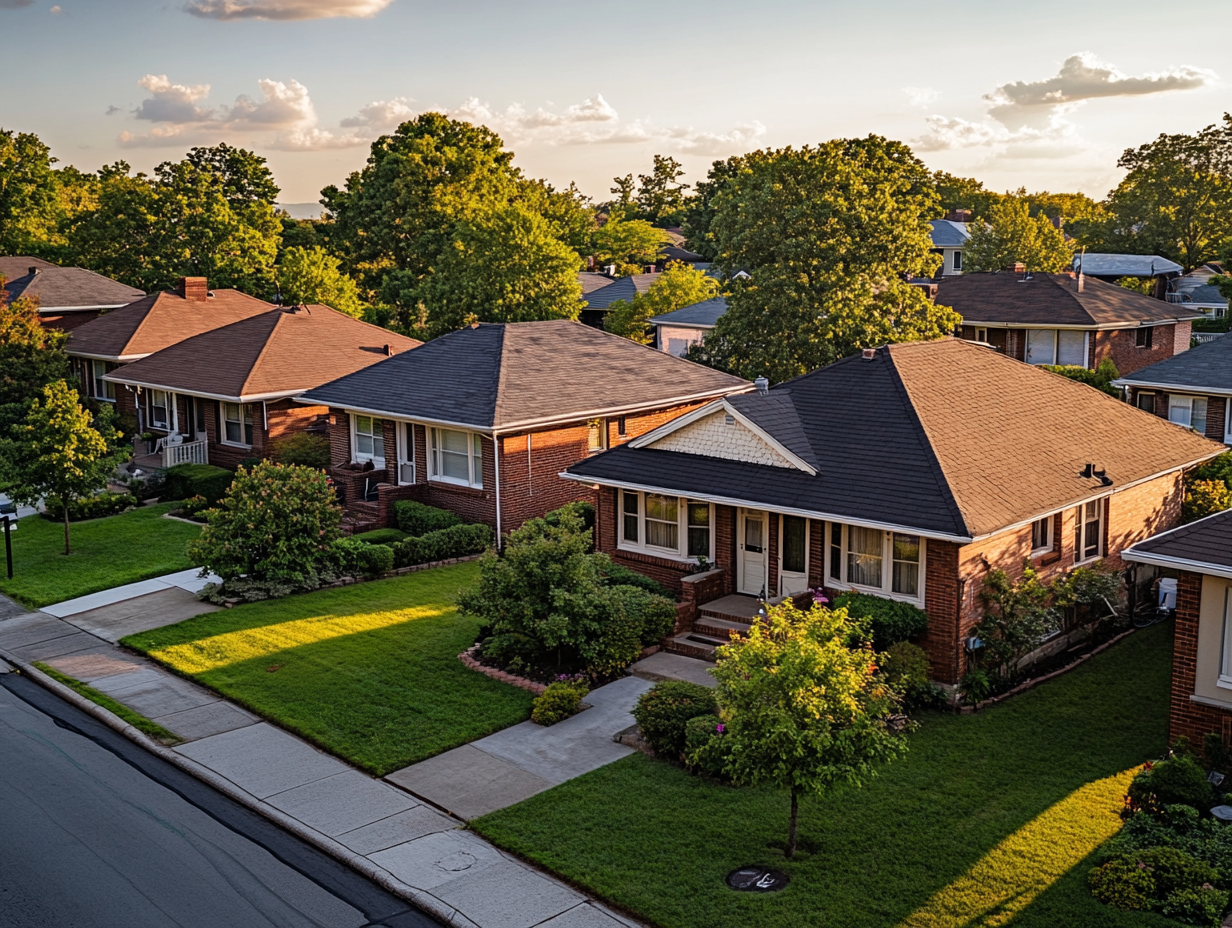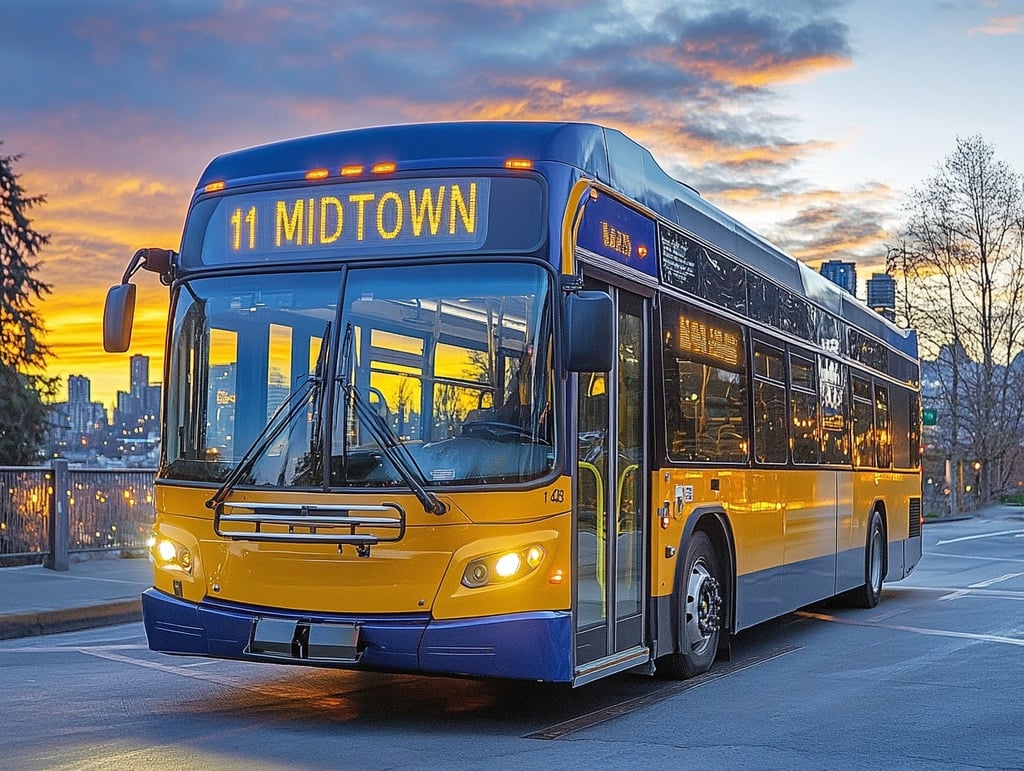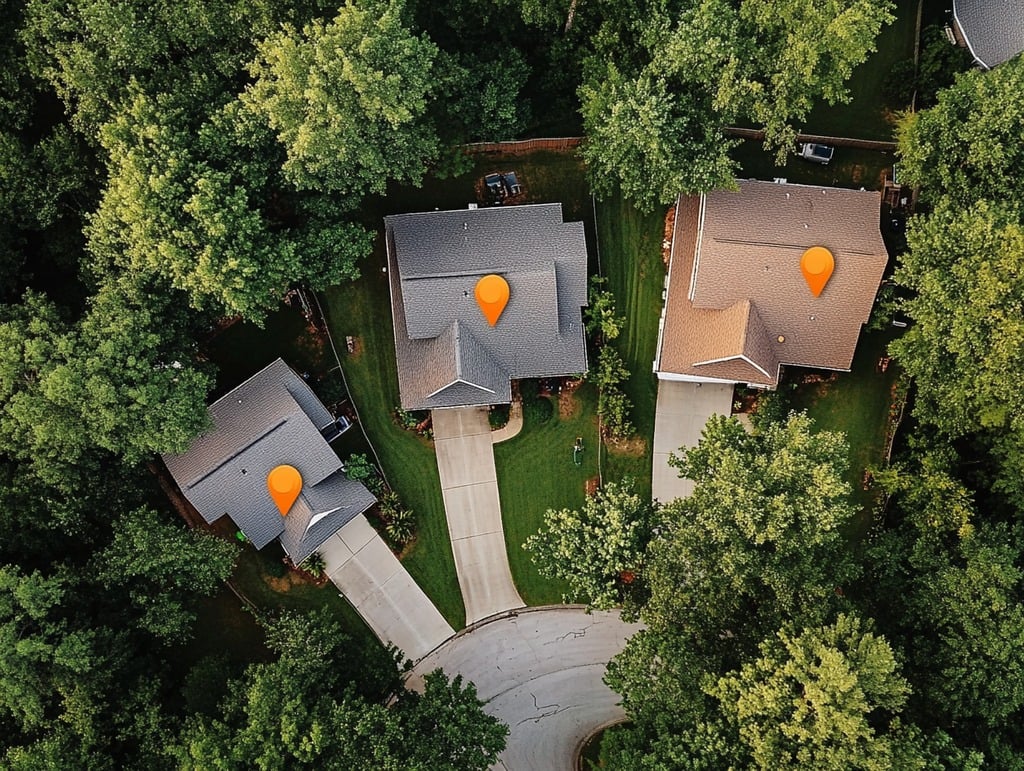There’s a special thrill that comes with spotting the next big thing—whether it’s a new fashion trend, tech gadget, or… neighborhood. Yes, neighborhoods go through trends, too. And for savvy buyers, investors, or even first-time home shoppers, being ahead of the curve in real estate can pay off in a big way.
We’re talking about the elusive “up-and-coming neighborhood”—that sweet spot where prices are still relatively affordable, but the writing is on the wall: it won’t stay that way for long.
But how do you spot one before it explodes onto everyone else’s radar? How can you tell if that quiet corner of town is about to become the next hotspot for craft breweries, boutique gyms, and dog-friendly cafes?
Good news—there are signs. And if you know what to look for, you can position yourself to ride the wave of neighborhood growth instead of chasing it.
Here are five key signs a neighborhood is up-and-coming—before everyone else finds out.
1. 🚧 New Construction is Everywhere—But Not Just Homes
New homes going up? That’s a start. But the real indicator of long-term growth isn’t just residential construction—it’s a balanced mix of residential, commercial, and public infrastructure development. When you see that happening all at once, it’s a major green flag.
Think about it: if developers are building homes, that’s one thing. But when cities are pouring money into widening roads, resurfacing sidewalks, installing better lighting, and even planting trees, they’re investing in the long game. And when private developers are also throwing their hats in the ring—adding apartment complexes, shopping centers, or mixed-use buildings—you know there’s some serious confidence behind the area’s future.
Look for:
-
Construction cranes or large-scale renovation projects
-
Upgraded utility poles, water lines, or transit stops
-
New schools or expansions of existing ones
-
Public parks being revitalized or created from scratch
One of the clearest signs? A former industrial space being transformed into a residential or retail development. That means local officials and developers believe people are going to want to live, work, and spend time there.
Pro Tip: Check your local city planning department’s website for upcoming zoning changes or permits filed for major projects. These often hint at what’s coming before the first shovel hits the dirt.
2. 🛠️ Infrastructure Investment from the City or County
There’s a popular saying in real estate: “Follow the money.” When local governments are spending big on a neighborhood, that’s a solid clue that someone knows something you don’t (yet). And we’re not talking about emergency pothole fixes—we mean long-term capital improvement projects designed to shape the community’s future.
Examples of meaningful infrastructure investment include:
-
Installing bike lanes and pedestrian-friendly crossings
-
Adding or expanding public transit options (think bus routes, commuter rail, light rail, etc.)
-
Building greenways, boardwalks, or waterfront access
-
Revamping stormwater systems or flood mitigation (especially in coastal areas)
These improvements often serve a dual purpose: they support population growth and they make the area more attractive to future residents and businesses. If you notice these changes happening in a pocket of town that was previously overlooked, it might be time to take a closer look.
In cities like Wilmington, North Carolina—or anywhere along the Southeastern coast—you might also see updates to hurricane preparedness infrastructure or elevation changes to prevent flooding. These aren’t just safety improvements; they’re signs of confidence in the neighborhood’s future livability.
3. 🏪 Local Business Growth: Where There’s Coffee, There’s Momentum
Forget Starbucks for a second. What you want to see is the rise of independent coffee shops, artisan bakeries, dog groomers, breweries, yoga studios, or co-working spaces. These businesses are early adopters, willing to take a chance on affordability and character over immediate foot traffic.
When you see several small businesses setting up shop in a historically quiet area, it’s often the beginning of a transformation. These business owners are betting on future demand—and they’re often plugged into the creative or entrepreneurial communities that help drive neighborhood revitalization.
Pay attention to:
-
“Coming soon” signs in old buildings or empty storefronts
-
Pop-up events like night markets, food truck festivals, or art walks
-
Breweries or taprooms opening in warehouses or industrial zones
-
The presence of new salons, boutique gyms, and trendy restaurants
Here’s the key: these businesses don’t go where demand is already sky-high—they go where the next wave of residents is expected to land. They need rent to be affordable and clientele to be just around the corner. So if you see these types of businesses moving in, the wave is likely on its way.
Bonus Clue: Look at Google Maps or Yelp and track the number of new businesses added in the past 6–12 months. Growth in highly rated, independent businesses is a major tell.
4. 💸 Price Trends Show Slow But Steady Appreciation
Contrary to popular belief, the best time to buy in an up-and-coming neighborhood is not when prices suddenly skyrocket. That’s usually a sign you’ve missed the early train. The sweet spot is when prices are inching upward, but still well below neighboring, more popular areas.
Let’s say you’re looking in New Hanover County. If one neighborhood’s homes are selling for $100,000–$150,000 less than the next neighborhood over—and yet they’re only a 10-minute drive apart—you should dig deeper. If the lower-cost area is seeing consistent growth in:
-
Days on market decreasing
-
Sales volume increasing
-
Average sale price gradually climbing
…then that’s your window.
It’s especially telling when investors (not just homeowners) start picking up properties. If a flurry of flips and remodels hits the market in the same zip code, it’s usually not a coincidence.
Use Local Real Estate Sites: Use tools like market snapshots or monthly MLS reports to look at year-over-year changes. If price per square foot is rising slowly but surely, you might be watching a neighborhood on the rise.
5. 🌱 Demographic Shifts and Lifestyle Appeal
People vote with their feet—and their U-Hauls. One of the more subtle (but incredibly telling) signs that a neighborhood is transforming is who is moving in and why.
Here are some key shifts to look out for:
-
Young professionals or creatives moving in for affordability and character
-
Remote workers choosing areas with good internet, charm, and walkability
-
Empty nesters or retirees looking for value and access to amenities
-
Multigenerational families seeking flexible homes and schools
You can often see this trend through social media, online forums, or local Facebook groups. Are more people asking about the area? Posting photos from new events? Starting neighborhood cleanups or community gardens?
Another major sign is the rise in short-term rentals (Airbnb, VRBO) and mid-term stays for traveling nurses, digital nomads, or corporate workers. This often signals outside interest in the area before traditional demand kicks in.
Also look for intangible lifestyle signs like:
-
Dog parks, playgrounds, or splash pads being added
-
More bikes on the street than cars
-
Farmers markets and food co-ops
-
Murals or community art installations
When the neighborhood starts to feel lived in and loved, growth is usually close behind.
Final Thoughts: Timing is Everything
Getting in early on an up-and-coming neighborhood isn’t just about bragging rights (though, let’s face it, it feels pretty good to say, “I bought there before it was cool”). It’s about maximizing value, both in terms of home equity and lifestyle.
You’re investing in a vision—one that hasn’t fully come to life yet. And while that always involves some risk, following the right indicators can make your guess a whole lot smarter.
To recap, keep your eyes peeled for:
-
A mix of residential and commercial new construction
-
City investment in public infrastructure
-
Local businesses popping up in unlikely places
-
Slow but steady price appreciation
-
Demographic and lifestyle changes
If you spot three or more of these happening in one area, chances are you’ve found a diamond in the rough.
Bonus: Ask a Local Real Estate Agent
Want the inside scoop? Talk to a real estate agent who knows the area. The best agents have their ears to the ground and know where builders are buying land, which schools are expanding, and which neighborhoods are showing that early buzz.
At The Cameron Team, we’ve been watching the trends in Wilmington, Leland, Hampstead, and beyond since 1994. If you’re curious about which communities are heating up—before they become the next big thing—we’re here to help.
Feel free to reach out, browse our neighborhood guides, or just come chat about what’s next for Southeastern North Carolina real estate. Who knows? Your perfect investment—or dream home—could be right around the corner.
Ready to learn more about the hidden gems around Wilmington and the Cape Fear coast? Drop us a message or follow us on social media for neighborhood spotlights, new construction updates, and market insights.
Let’s discover the next great neighborhood together.







